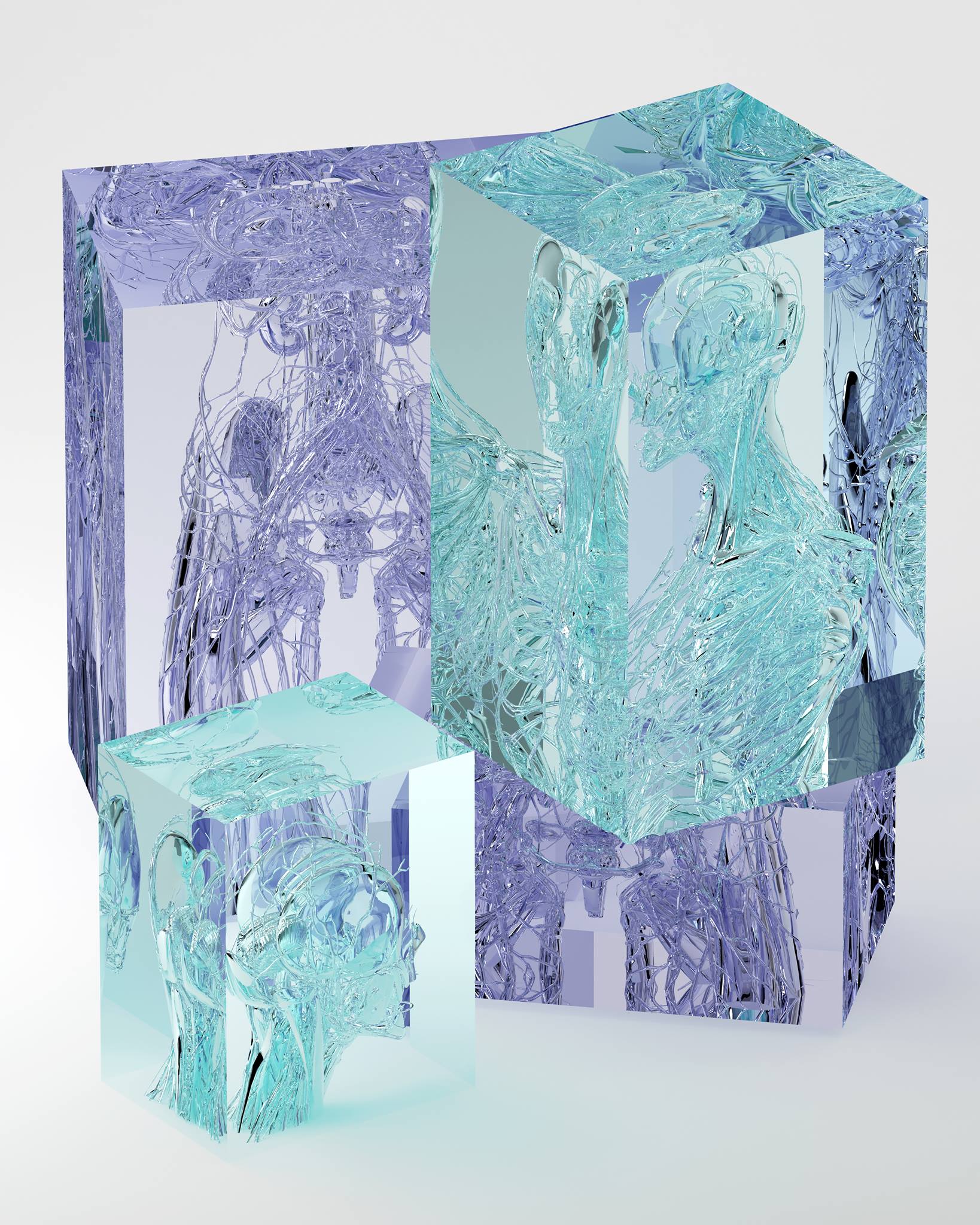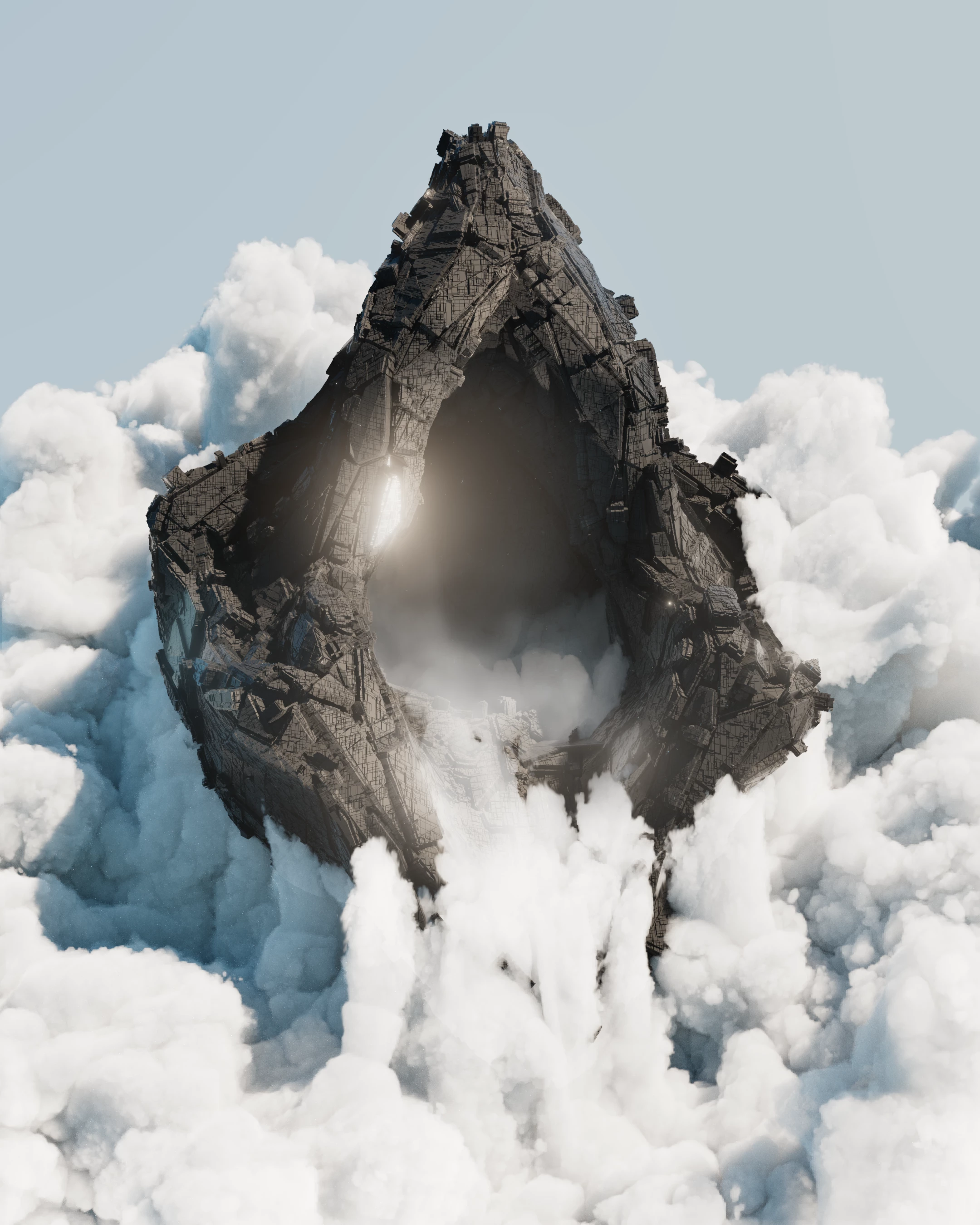
- Date
- 03 JULY 2023
- Author
- DAVIDE ANDREATTA
- Image by
- ADEM ELAHEL OPEN DRAFT SETTINGS
- Categories
- Monday Spotlight
Why keep a human shape when you can be anything? Reimagining the present with 3D artist Adem Elahel
A quick glance at Belgian-based 3D artist Adem Elahel will show you that musical symphonies aren’t the only symphonies you can orchestrate. An imaginative mind and a prolific creative in the realm of 3D art, with his visionary compositions of pixels and polygons he weaves dreams into stunning three-dimensional realities breathing life into digital landscapes and characters.
We asked him about 3D, escapism, the present and its reimagination, and the synergies between physical and digital fashion.
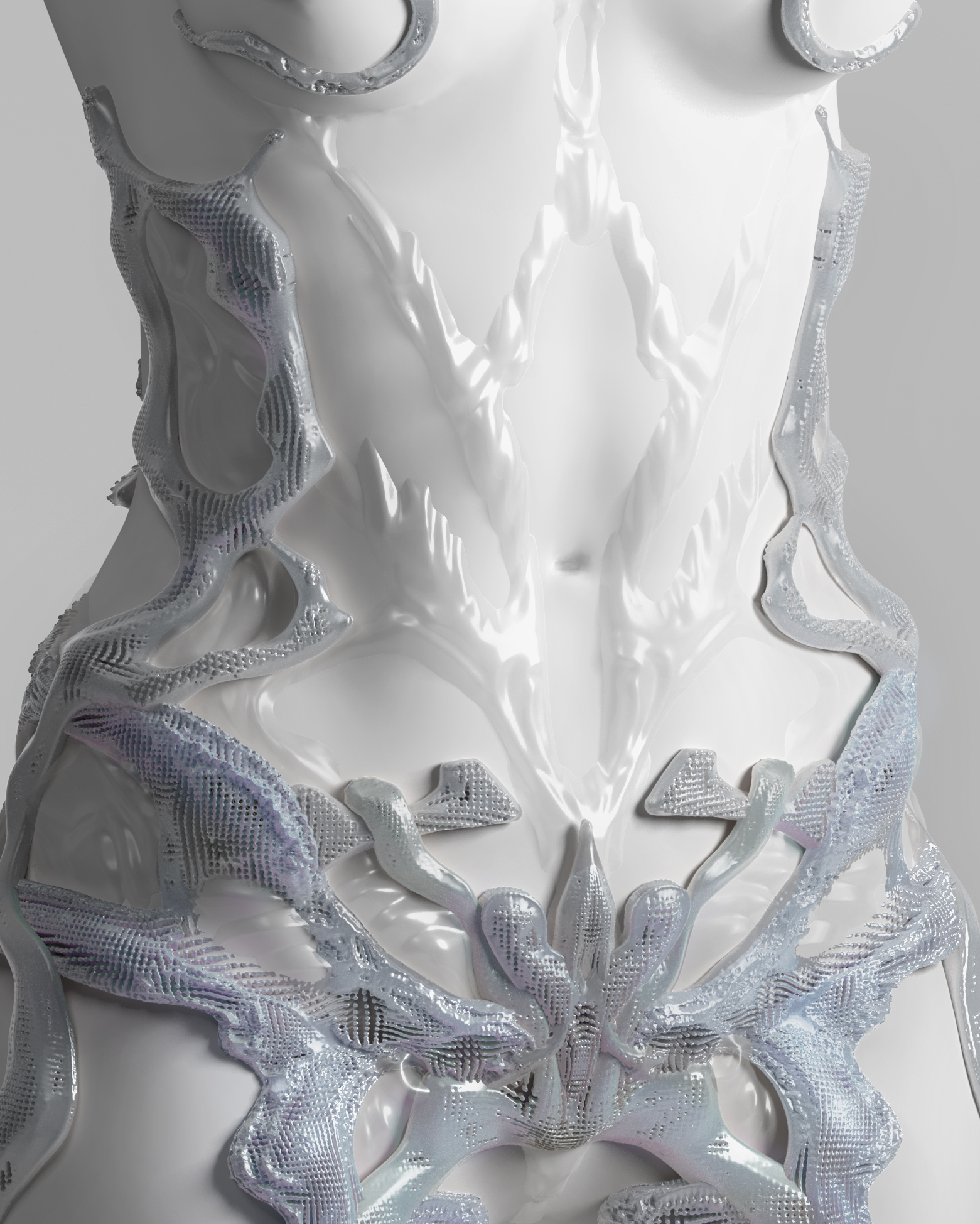
Hello Adem, to start things off can you briefly introduce yourself to our community?
I’m a French 3D artist who has been working in this field for the past 8 years. Currently living in Brussels, I have an educational background in fine arts and video gaming.
Having many different interests, 3D is actually a perfect fit being a very versatile medium that allows me to work at the intersection of various fields from contemporary art to fashion with brands like Auroboros or amazing studios (Services Generaux, Hypebeast, JTM).
What interest did come first? 3d or fashion design?
I would say 3D, but I quickly began to modelize and simulate a lot of textiles so fashion followed immediately. I’m fascinated by the way fabrics can take many shapes and by the range of movements they display: it’s a sort of metamorphic image.
That’s why it’s always a pleasure to work on fashion-related projects and approaching them with a digital medium allows me endless possibilities: “impossible” materials can be combined thanks to physics properties specific to the digital realm.
However, in the future I’d be thrilled to work more in the physical world. I’m curious to experiment with interior design, for instance, creating textile patterns.
I’ve also started another project consisting of glitched photographs printed on textiles. This is a project that I believe deserves more attention and it may also be part of an exhibition.
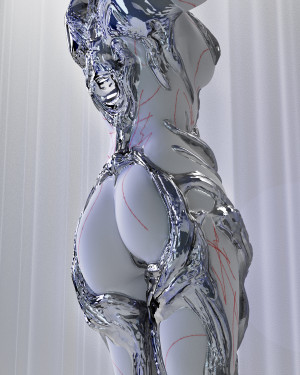
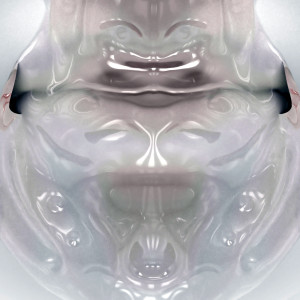
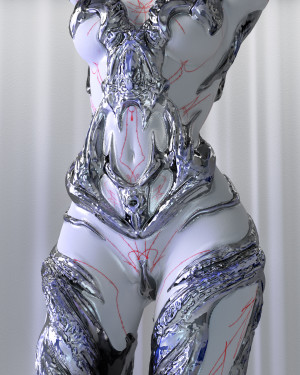
Oftentimes, the digital sphere is interpreted as a way of escaping the captivity of our everyday lives and while I think that to a certain extent there is some truth to that, I also believe that there’s much more at stake than simple escapism: embracing alternative identities can be an exercise of resistance, a way of reimagining the present. What do you expect from digital fashion?
I personally quite agree with the vision of the internet's first pioneers, who saw in it a possibility of reinvention of ourselves, to be freed from real-world constraints. If this is the case, why keep a human shape when you can be anything? A cloud, a tree or an astral divinity…Cyberspace can provide us with this opportunity along with a vision for a more egalitarian society. I don’t think there is shame in escaping a problematic system if there’s a chance to build a better one next to it. Let’s experiment more as the possibilities are endless!
Do you draw more inspiration from irl events or from content you consume online? What kind of relationship do you think there is between physical and digital fashion? Feedbacks go both ways and nowadays it’s impossible to just separate them, but at times their relationship seems a contrasting one whereas other times it seems a fully functioning marriage.
I tend to be a huge consumer of images, art, movies and every other medium I put my eyes on. That implies that everything can feed me, but there’s also a necessary time for digestion before they can be integrated with my own vision.
About the relationship between digital and physical fashion: I believe that it comprises various tendencies from one of opposition to a more synergistic one (see 3D printed pieces of fashion, augmented reality, etc…). And, actually, this can be true for many other creative fields.
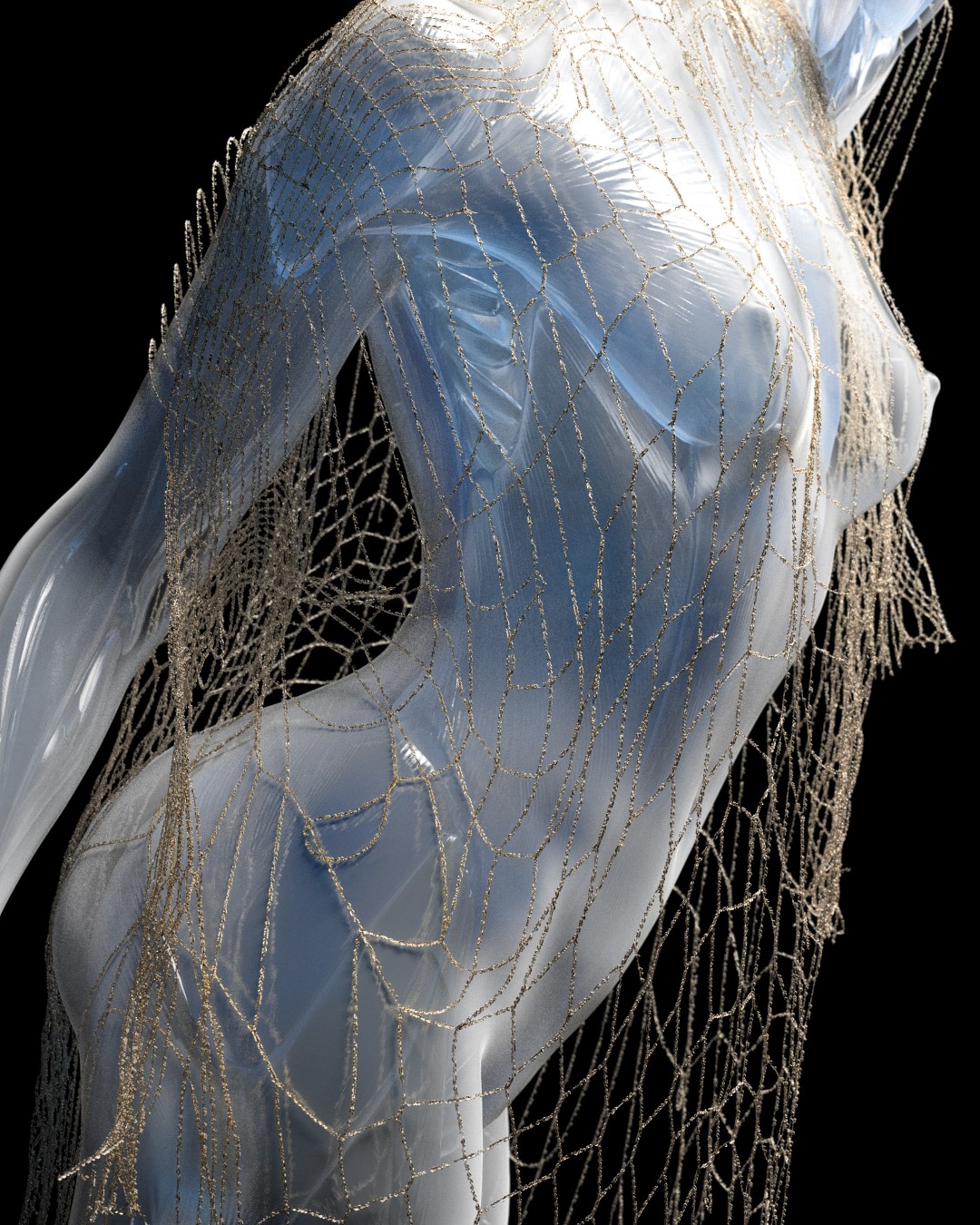
Among the many projects you participated in, there’s your contribution to MAITREPIERRE’s FW23/24 collection: in fact, you realized a series of print designs for that particular collection. How does it make you feel this back and forth from digital to physical design?
Actually, I’ve been working with MAITREPIERRE for a while. It’s a fun, long-term collaboration where every season I collaborate with Sarah Decheval and Alphonse Maitre Pierre on a new collection of prints (just now we’re working on next season).
There is also a telling anecdote about this collaboration: it began as a digital attempt to present a collection during the Covid pandemic when physical showing was almost impossible and now it went back to physical focus. This shows how much digital media can be helpful and how also the inverse is true.
There’s a video of yours that I love and I’m referring to the one you made for the Lanvin and Suicoke collaboration. The reason why I like it so much it’s because it encapsulates two important characteristics of digital creations: their volatility – digital content seems to be somehow erratic – which here is explored thematically with the shoes appearing thanks to the same glittery vortex that then proceeds to carry it away, and their infinite imaginative power. What are your thoughts on this?
I didn’t have the occasion to think much about it yet as it’s quite a recent project. But yes, as you said it can be viewed as a kind of reflection on the fundamental values of digital productions - It’s always on the edge of disappearance, on the verge of the bottomless abyss of the internet archive. That’s why sometimes printing or creating physical stuff can be a functional option. This reminds me of my desire to make a book showcasing all the work I’ve done until now. I think I would sleep better that way!
